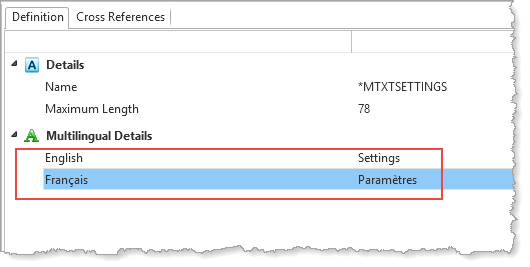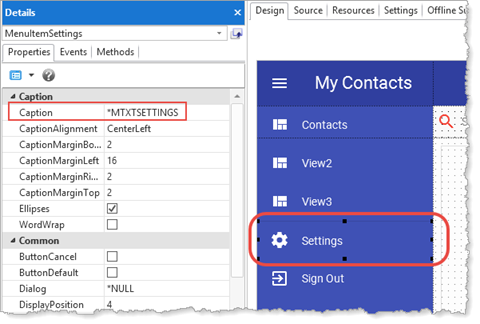
Visual LANSA supports the development of multilingual applications. This means the application includes all text in different languages. The same application code can be executed using any of its supported languages.
As well as languages such as English, French and German, languages which require DBCS, such as Japanese and Simplified Chinese can also be used.
Multilingual applications are created by having Repository objects for fields, tables, indexes and all application components which support for multilingual details. For example, a field definition has Description, Label and Column Headings defined for each language. Together, these mean that much of the application's interface can be executed in a different language.
Multilingual Text Variables can be used to define all other text which needs to be part of the user interface. For example, a multilingual text variable defined as shown defines the Caption property for a MenuItem control in a Settings component.

Below note the control MenuItemSettings is selected and its Caption property is set as a multilingual variable, *MTXTSETTINGS.

When executed using the French language, the Caption will be shown as Paramètres.
In a multilingual application the Caption property for every push button, tab sheet and menu item (and so on) must be defined as a multilingual variable.
See System and Multilingual Variables.
See Multilingual Application Design.